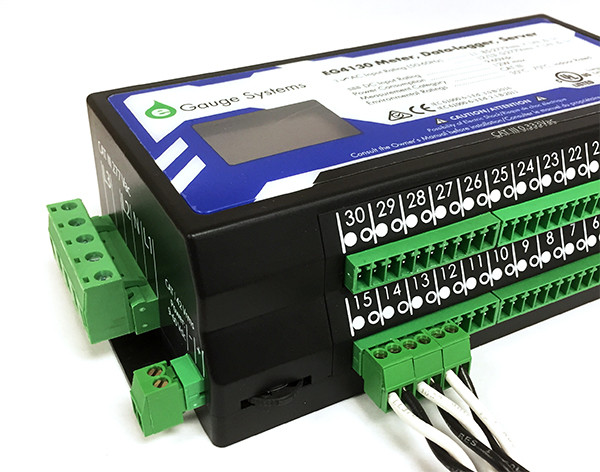AC Rope CTs (Rogowski Coil)
Visit the online store page
Rope CTs (technically called Rogowski Coils) are large, flexible sensors for monitoring current like split-core CTs. Rope CTs are installed similar to standard split-core CTs, where a connector on the rope allows it to be opened and placed around a conductor without needing to thread the conductor through it. For pricing and available models, visit the online store.
Rope CTs are designed for 20-30 amps or greater load. Lower amperage results in lower accuracy readings.
Face the arrow on the rope towards what you want to measure. Positive power polarity when power is against the arrow, and negative when it is the same direction the arrow points.
The position of the Rope CT on the conductor affects accuracy. See this article for more information.
Why use a Rope CT?
Rope CTs are excellent for bus-bars and large switch-gear applications that standard split-core CTs cannot fit around. Rope CTs are flexible and easy to install but require a minimum amperage of approximately 30A for accuracy.
| Rope CT |
Specifications
Full specs (data-sheet PDF)
- Operates 50Hz/60Hz
- Accurate within 1% from 30A to stated current rating
- Maximum primary insulation up to 600 Vrms
- 2m (6.5') wire lead with CT connector
- Notes: 30A minimum current required at all times.
- No external integrator required
- 5-year Limited Warranty
Hardware included
- 1x Rope CT with built-in 8 foot leads and 2-pin plug affixed
Assembly/installation information
See the Installation Overview Tips to get started.
-
To reduce risk of electric shock, open or disconnect circuits from the power distribution system (or service) of the building before installing or serving CTs.
- Open the rope CT by gently pulling squeezing the latch and pulling the end of the rope CT out. Do not touch the inside surfaces where the CT opens. Any oils or debris in that area worsens accuracy.
- Wrap the rope CT over the conductor of the circuit to be measured. Make sure the arrow on the rope CT points in the direction of the primary current flow (the current flow that should yield a positive power reading).
- Close the rope CT by gently squeezing the latch and inserting the other end inside the latching end and release the latch.
- Verify that the rope CT is fully closed.
- Optional: secure the CT to the conductor with a cable tie.
- Route the twisted pair wires of the CT to the meter such that they do not directly contact live terminals or bus bars.
- Plug the 2-pin terminal at the end of the twisted pair wires into an unused port on the meter.
- Configure the sensor input in the meter interface and complete the general configuration.
 |
| CTs connected to eGauge meter. |

